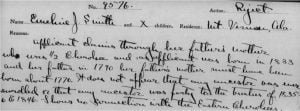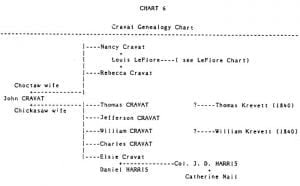Kan-hatki Tribe
The history of the Kan-hatki or Ikan-hatki (“White ground”) is parallel with that of the Fus-hatchee. They appear on the De Crenay map, in the lists of 1738, 1750, 1760, and 1761, and in those of Bartram, Swan, and Hawkins. In 1761 their officially recognized traders were Crook & Co. Swan gives Kan-hatki as one of two towns occupied by Shawnee refugees, but this statement was probably due to the presence of some Shawnee from the neighboring settlement of Sawanogi. In September, 1797, Hawkins states that the trader here was a man named Copinger. He gives the following account of the … Read more



